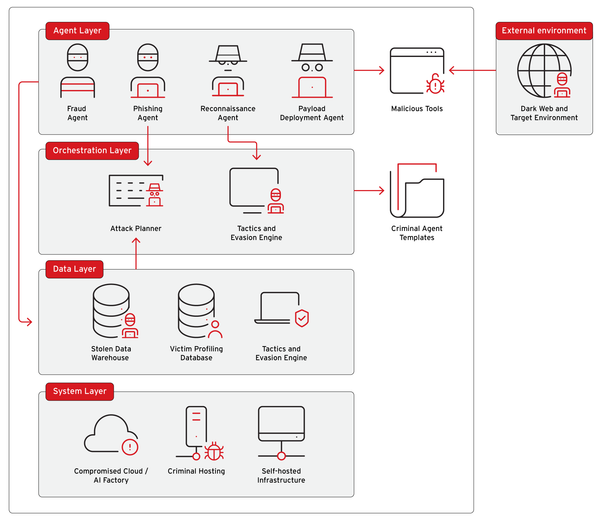Cryptocurrency Investment Scams: The Latest Tricks and How to Avoid Them


Cryptocurrency has taken the world by storm, offering a decentralized, digital alternative to traditional currencies. With its meteoric rise in popularity, it’s no surprise that scammers have found a fertile ground to exploit unsuspecting investors. Crypto scams are becoming increasingly sophisticated, with fraudsters employing a variety of tactics to lure victims into their traps. In this comprehensive guide, we’ll delve into the latest tricks used by scammers, highlight the red flags to watch out for, and provide you with practical tips to stay safe in the wild world of crypto.

Why Crypto Scams Are on the Rise
The allure of cryptocurrency lies in its potential for high returns, anonymity, and the promise of a financial revolution. However, these very features also make it an attractive target for scammers. The decentralized nature of crypto means there’s no central authority to regulate transactions, making it easier for fraudsters to operate under the radar. Moreover, the complexity of blockchain technology can be confusing for newcomers, leaving them vulnerable to manipulation.
According to the Federal Trade Commission (FTC), consumers lost over $1 billion to crypto scams in 2023 alone, with the number of reported cases increasing by 60% from the previous year. As the crypto market continues to grow, so does the ingenuity of scammers. Understanding their tactics is the first step toward protecting yourself.
Common Types of Cryptocurrency Investment Scams
Scammers are constantly evolving, but their methods often fall into a few key categories. Here’s a breakdown of the most prevalent crypto scams you need to be aware of:
1. Fake Exchanges and Wallets: The Illusion of Legitimacy
Fake exchanges and wallets are designed to look like the real deal, complete with professional-looking websites, apps, and even customer support. These platforms promise secure trading or storage of your crypto assets, but in reality, they’re set up to steal your funds or personal information.
How It Works: You sign up on what appears to be a legitimate exchange or wallet, deposit your crypto, and maybe even make a few trades. But when you try to withdraw your funds, you’re met with excuses, delays, or outright denial. In some cases, the platform disappears overnight, taking your assets with it.
Real-Life Example: In 2022, a fake exchange called “CryptoSecure” duped thousands of investors out of $50 million. The site mimicked popular exchanges, but once users deposited their crypto, they could never withdraw it. The scammers vanished, leaving victims with no recourse.

How to Spot It:
- Check the URL: Look for HTTPS and ensure the domain is correct. Scammers often use lookalike domains like “coinbass.com” instead of “coinbase.com.”
- Verify Licensing: Legitimate exchanges are registered with financial authorities. Check for licenses or regulatory compliance.
- Look for Reviews: Search for user reviews on trusted platforms like Trustpilot or Reddit. A lack of reviews or a flood of negative feedback is a red flag.

2. Ponzi Schemes: The Promise of Easy Money
Ponzi schemes in the crypto world are similar to their traditional counterparts: they promise high returns with little risk, but the payouts come from new investors’ money rather than actual profits. These schemes can collapse quickly, leaving latecomers with nothing.
How It Works: Scammers lure investors with the promise of guaranteed returns, often through “staking” or “yield farming” programs that claim to generate passive income. Early investors might even receive payouts to build trust, but eventually, the scheme implodes when there aren’t enough new investors to sustain it.
Real-Life Example: The infamous Bitconnect scam, which collapsed in 2018, promised investors up to 40% monthly returns. It was later revealed to be a Ponzi scheme, costing victims over $2 billion.

How to Spot It:
- Guaranteed Returns: No investment is risk-free. If it sounds too good to be true, it probably is.
- Complex Jargon: Scammers often use technical terms to confuse investors and make their scheme seem legitimate.
- Referral Bonuses: Ponzi schemes often incentivize recruiting new investors with bonuses or commissions.
3. Phishing Attacks: The Digital Pickpocket
Phishing attacks are a tried-and-true method for scammers, and they’ve adapted seamlessly to the crypto world. These attacks aim to trick you into revealing your private keys, wallet passwords, or other sensitive information.
How It Works: You might receive an email, text, or social media message that appears to be from a legitimate crypto platform, asking you to “verify” your account or “reset” your password. The message contains a link to a fake site that captures your login credentials or asks for your private keys.
Real-Life Example: In 2023, a phishing campaign targeted MetaMask users, sending fake alerts about “security breaches” that required users to enter their seed phrases on a bogus site. Thousands of wallets were drained as a result.
How to Spot It:
- Check the Sender: Hover over email addresses or links to ensure they’re from official domains. Look for slight misspellings or extra characters.
- Don’t Click Links: Always go directly to the platform’s official site or app to verify any alerts.
- Never Share Private Keys: Legitimate platforms will never ask for your private keys or seed phrases.

4. Pump-and-Dump Schemes: The Hype Machine
Pump-and-dump schemes involve artificially inflating the price of a low-value cryptocurrency (often a “shitcoin”) through hype, only to sell off once the price peaks, leaving other investors with worthless tokens.
How It Works: Scammers create buzz around a specific coin through social media, forums, or even paid influencers. They encourage people to buy in, driving up the price. Once the price reaches a certain level, the scammers sell their holdings, causing the price to crash.

Real-Life Example: In 2021, the “Squid Game” token surged by 75,000% in a week, fueled by social media hype. When the creators sold off their tokens, the price plummeted to zero, wiping out $3 million in investor funds.
How to Spot It:
- Sudden Hype: Be wary of coins that suddenly gain massive attention without clear reasons or developments.
- Low Liquidity: Coins with low trading volume are easier to manipulate.
- Anonymous Teams: If the project’s developers are anonymous or lack a verifiable track record, proceed with caution.
Red Flags to Watch Out For
Scammers rely on deception, but there are telltale signs that can help you identify a potential scam before it’s too late. Here are the key red flags to keep an eye on:
- Too-Good-to-Be-True Returns: Any investment promising guaranteed or unusually high returns is likely a scam. Remember: if it sounds too good to be true, it probably is.
- Pressure to Act Quickly: Scammers often create a sense of urgency, claiming that you’ll miss out if you don’t invest immediately. Legitimate investments don’t require rushed decisions.
- Lack of Transparency: If a platform or project doesn’t provide clear information about its team, technology, or business model, that’s a major warning sign.
- Unsolicited Offers: Be cautious of unsolicited messages or emails offering investment opportunities. Scammers often cast a wide net to find victims.
- Requests for Personal Information: Never share your private keys, seed phrases, or other sensitive data with anyone. Legitimate platforms don’t need this information.
How to Stay Safe in the Crypto World
Protecting yourself from crypto scams requires vigilance, research, and a healthy dose of skepticism. Here are some practical tips to help you navigate the crypto landscape safely:
1. Do Your Homework
Before investing in any cryptocurrency or platform, conduct thorough research. Check the project’s whitepaper, team credentials, and community feedback. Use trusted sources like CoinMarketCap, CoinGecko, or reputable crypto news sites to verify information.
2. Use Reputable Exchanges and Wallets
Stick to well-known, regulated exchanges like Coinbase, Binance, or Kraken. For wallets, opt for hardware wallets like Ledger or Trezor, which offer enhanced security features.
3. Enable Two-Factor Authentication (2FA)
Always enable 2FA on your crypto accounts. This adds an extra layer of security, making it harder for scammers to access your funds even if they have your password.
4. Be Cautious with Links and Downloads
Avoid clicking on links in unsolicited emails or messages. If you need to access a platform, type the URL directly into your browser or use a bookmark.
5. Educate Yourself
Stay informed about the latest scam tactics by following crypto news outlets, joining reputable forums, and participating in community discussions. Knowledge is your best defense.

What to Do If You’ve Been Scammed
If you suspect you’ve fallen victim to a crypto scam, act quickly:
- Stop All Transactions: Cease any further interactions with the scammer or platform.
- Report the Scam: File a complaint with the FTC at ftc.gov/complaint and report the incident to the platform or exchange involved.
- Secure Your Accounts: Change passwords and enable 2FA on all your crypto and financial accounts.
- Monitor Your Finances: Keep an eye on your bank and crypto accounts for any unauthorized activity.
Stay Vigilant, Stay Safe
The world of cryptocurrency is exciting, but it’s also fraught with risks. Scammers are constantly innovating, finding new ways to exploit the unwary. By staying informed, recognizing the red flags, and following best practices, you can protect yourself and your investments. Remember: in crypto, as in life, if something seems too good to be true, it probably is.
Share this guide with your network to help others stay safe, too. For more insights on avoiding scams, sign up for our newsletter or explore our Scam Hub. Here’s to smart, secure investing in the wild world of crypto!
Additional Resources
Stay sharp, invest smart, and keep your crypto safe from scammers!










